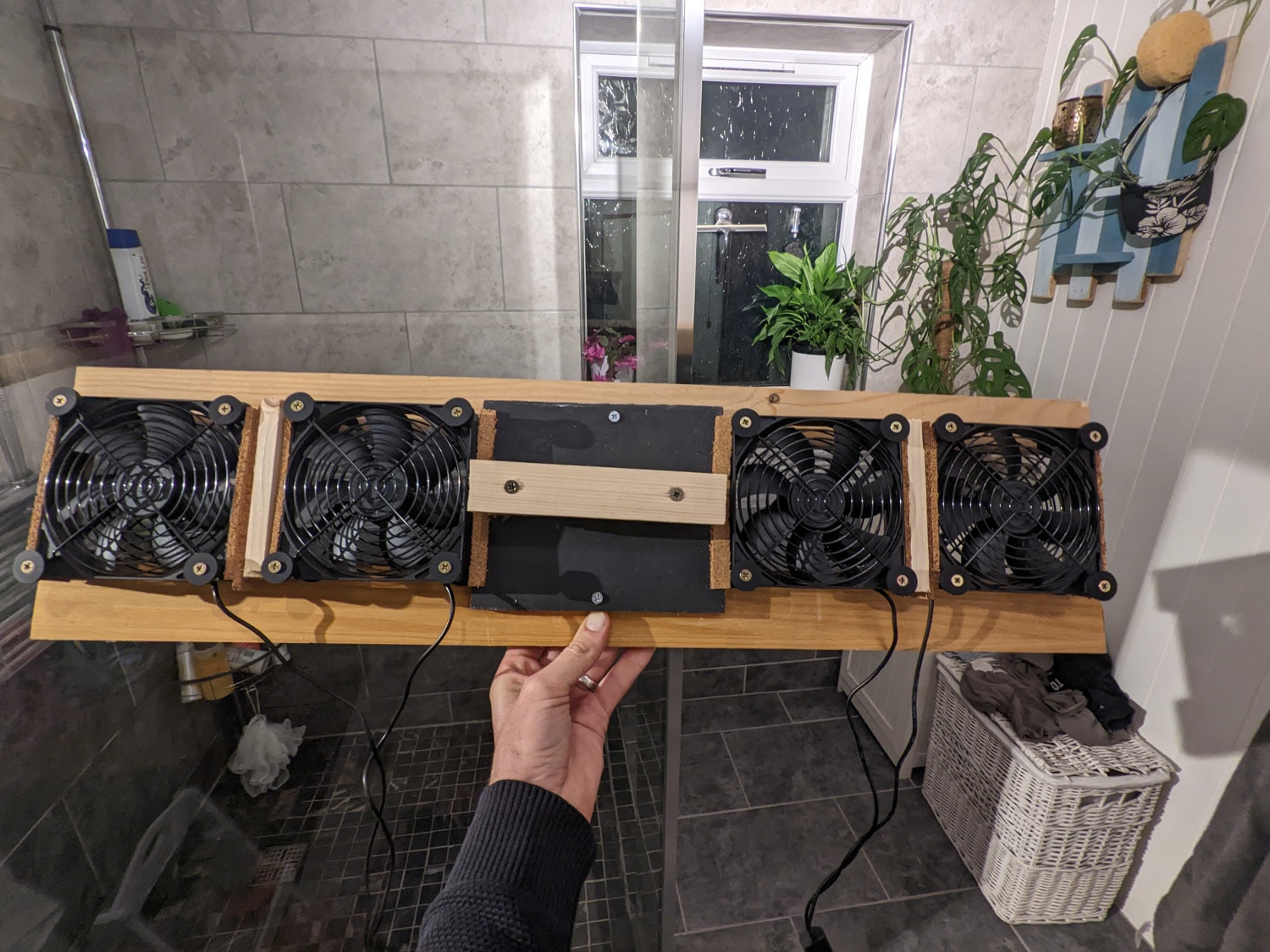
Prototypal damp solutions
- 2 minsCornish houses are naturally damp. It’s the nature of their construction. Whilst everything in the world suffers from entropy, the old housing stock in the far South West UK seemingly trend toward wet rather than decay.
In recent years, we’ve experimented with different solutions to reduce dampness, including:
- A dehumidifier for drying the bathroom after use.
- Damp traps in cupboards.
- Window vacs in the morning.
The all help, but they all cost money. For example, the dehumidifier uses 1/2 a kWh of energy in the first hour of use but 1/5 kWh from then on. Day to day usage is only ever for an hour or so. In todays energy conscious climate, a couple of 1/2 kWh a day add up over time.
Whilst showering I was pondering how to more effectively dry the room. My best ideas materialise whilst naked and wet. Looking at the steam floating around me, I realised it would be much more efficient to remove the wet whilst it’s suspended in the air as opposed to letting it condense. Once condensed, the dehumidifier kind of has to re-evaporate it. . . which costs me money.
With this realisation, I set about pondering some more. The ceiling fan does make a difference, but not much of one to be honest. We need to move more air.
Rummaging in the box to failed projects, I found a couple of sets of dual 12cm usb computer fans. These things move roughly 35 cubic feet per minute per fan. What I need is these attached to an open window blowing outwards, with a source of fresh air (i.e. an open door elsewhere in the room) to help create a flow of air.
Rummaging in the box of carpentry off cuts, I threw together a basic frame, sealing the gaps with some bits of foam and cork still kicking around from my time building sound absorption panels.
The frame wedges nicely into the open window right next to the shower, sucking out tons of steam. The power is provided by a battery pack, which occasionally makes the trip to work to recharge. Every little counts. Right?
Don’t get me wrong. The room is still wet after a shower, but instead of having walls running with water there’s some light condensation on the coldest of surfaces.
Leaving the fan running for 15 minutes after the shower is off results in a dryer room then it would be with a dehumidifier.
I’d call that a prototyping victory!
With a bit more work, it’d be possible to squeeze a couple more fans into a larger frame. A better seal over the window would help create greater negative pressure within the room. But, as we all know, premature optimisation is the root of all evil. This is good enough for the moment.
Unfortunately, this setup accidentally solves a secondary problem. People on the street can’t watch me showering anymore. I hope they don’t mind too much 🤣
